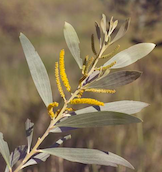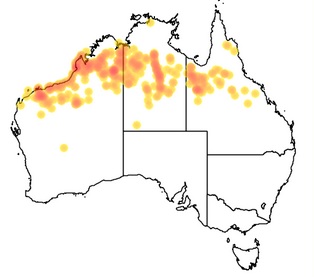Difference between revisions of "Acacia colei"
Nen888wiki (Talk | contribs) (→Alkaloid content) |
Nen888wiki (Talk | contribs) |
||
| (2 intermediate revisions by one user not shown) | |||
| Line 1: | Line 1: | ||
| − | + | ||
| − | {{botanics_info| | + | {{botanics_info|[[File:Acacia colei var colei copy.png]]|Acacia colei|DMT (Dr. Karl and abc.net.au 2005) 1%+ in bark (different net reports)}} |
</onlyinclude> | </onlyinclude> | ||
Latest revision as of 06:58, 20 February 2023
[[ |center|100x100px]] |center|100x100px]] |
Acacia colei |
|---|---|
| DMT (Dr. Karl and abc.net.au 2005) 1%+ in bark (different net reports) |
Contents
General Plant Info
Acacia colei is a perennial bush or tree native to Australia and southern Asia. A common name for it is Cole's Wattle. It grows to a height of up to 9 m. Acacia colei blooms from June through July and the flowers are bright yellow.[1]
Consists of 2 variants:
Geographic distribution
Identification
Phyllodes are 10-19 cm long and 20-55 mm wide, usually with three prominent longitudinal nerves. A dense covering of short hairs on the phyllodes gives the plant a characteristic silvery-blue appearance.
Alkaloid content
Claimed to contain 1.8% or more DMT in bark [2] [3], 0.2-0.6% in leaf. Needs further research.
Other uses
Its uses include environmental management, forage and wood. The seeds are good-tasting[4] and are potentially useful as food for humans. The results of tests in Nigeria for the feasibility of raising the tree as a drought-resistant food crop came out very positively.[5]
Extraction
Cultivation
Suppliers
Links
References
- ↑ Australian Biological Resources Study
- ↑ Dr. Karl Kruszelnicki ABC Radio
- ↑ Seldom/nen888 DMT Nexus
- ↑ ECHO Education Concerns for Hunger Organization
- ↑ World Wide Wattle
